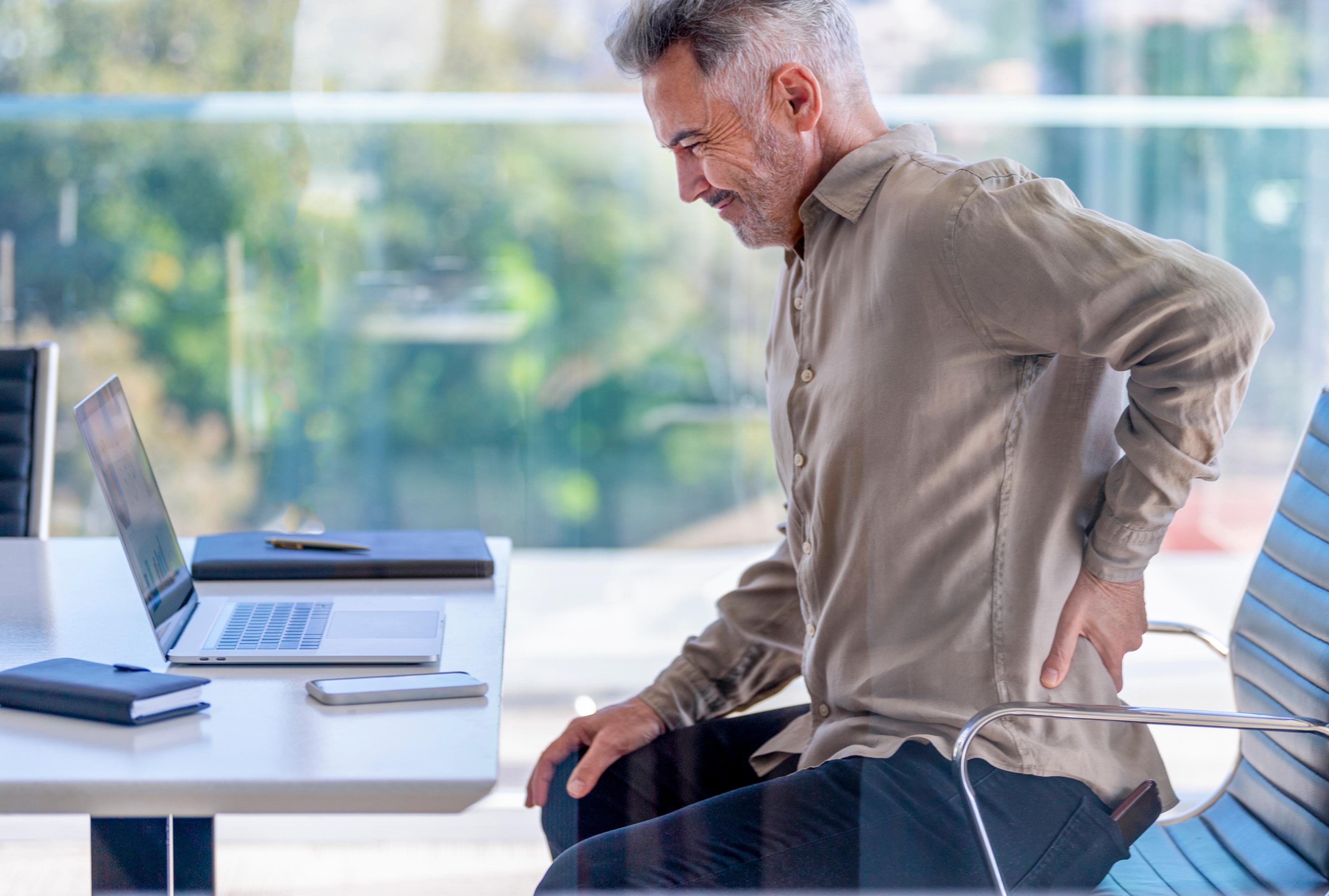How Much Do You Need to Exercise to Offset Sitting?
Jake Newby
| 4 min read

If you work remotely or your hobbies involve prolonged sitting, you may want to start counteracting the health risks of a sedentary lifestyle.
Sedentary behavior includes sitting for long periods with little to no exercise. Have you ever heard the phrase, “if you don’t use it, you lose it”? This saying can apply to your muscles. When you are sedentary, you go long stretches without using them at all, which can cause physiologic atrophy.
For older adults in particular, evidence shows a higher amount of sedentary behavior is associated with poor health outcomes like cardiovascular disease (CVD) and cancer. And a recent study linked sedentary lifestyles to an array of other adverse effects, including:
- Knee pain
- Metabolic disorders like diabetes and dyslipidemia
- Obesity
- Osteoporosis
Too much sitting can affect your mental health, too, as evidenced by a study that links anxiety and depression to sedentary lifestyles.
Exercise can lessen the effects of many physical ailments and that includes reversing the harmful effects of prolonged sitting. Are you seated a lot for work, or do you watch a lot of TV and play video games in your free time? Increasing the amount of physical activity you get every day can be a boon to your overall health.
Can exercise reverse a sedentary lifestyle?
A 2023 study found that two minutes a day of moderate-to-vigorous physical activity (MVPA) may offset the risk of too much sitting.
Based on health and activity tracker data for nearly 12,000 people age 50 and older, the study linked data with death registry information over a median of five years.
Individuals who spent more than 12 hours a day sitting were 38% more likely to die compared to those who sat for eight hours a day. However, that increased risk of premature death was only seen in people who got fewer than 22 minutes of MVPA per day.
How do I increase my physical activity?
Don’t think you have to start training like an Olympic athlete today to become healthier tomorrow. Just moving around more can greatly impact your physical and mental health.
Starting slow is recommended, especially if you don’t exercise often or are just getting back into the swing of it. Here are small tips you can incorporate into your daily life to offset the negative effects of too much sitting:
Stand more: Whether you can work at a standing desk or try to stand more in your free time – while watching TV or scrolling your phone – consider it a win to spend less time on your behind.
Walk more: Start walking outside or at your gym for 10 to 15 minutes a day, then steadily increase that number. Walking is an easy form of physical activity that helps improve the function of the body’s circulatory system, which helps reduce the risk of many chronic conditions. In fact, walking a little over 20 minutes each day can reduce heart disease risk by 30%.
Start with low-intensity activities and work your way up: Whether you work out at home, outdoors or at the gym, consider slowly building up to MVPA. According to the Mayo Clinic, you should aim to increase your activity level by no more than 10% a week.
This may include doing just a set or two of dumbbell exercises for a week, then increasing that to two-to-three sets the next. If you have an injury or a medical condition, talk to your health care professional or fitness professional, who can help you implement a fitness plan catered to your health profile.
The importance of exercise variety for seniors
Since physical activity becomes more important as you age, older adults should consider mixing in a variety of exercises that not only help burn more calories, but tone muscle and help protect against falls. Exercise variety should include:
- Balance training
- Endurance training
- Strength training
- Flexibility training and stretching
Learn more about specific exercises and suggested routines tied to these four main types of exercise by clicking here. You can also read more fitness content from A Healthier Michigan at these links:
Photo credit: Getty Images





